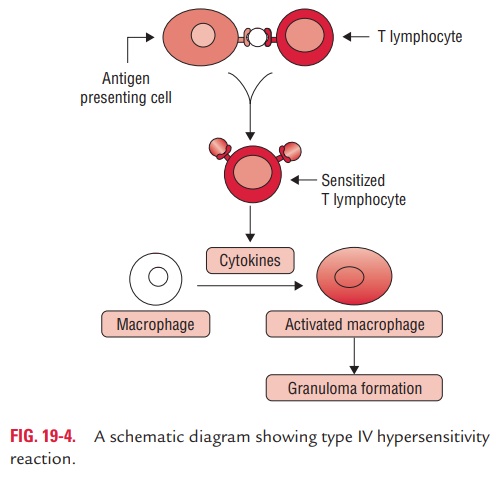Chapter: Microbiology and Immunology: Hypersensitivity
Mechanism of DTH(delayed type hyper-sensitivity)
Mechanism of DTH
The DTH response begins with an initial sensitization phase of 1–2 weeks after primary contact with an antigen (Fig. 19-4):
· TH1 subtypes CD4 are the cells activated during the sensi-tization phase.
· A variety of antigen-presenting cells (APCs) including Langerhans cells and macrophages have been shown to be involved in the activation of a DTH response. These cells are believed to pick up the antigen that enters through the skin and transport it to regional lymph nodes, where T cells are activated by the antigen.

· The APCs present antigens complexed in the groove of major histocompatibility complex (MHC) molecules expressed on the cell surface of the APCs.
· For most protein antigens or haptens associated with skin DTH, CD41 T cells are presented with antigens bound to MHC class II alleles, human leukocyte antigen (HLA)-DR, HLA-DP, and HLA-DQ. Specific MHC class II alleles are recognized to produce excessive immune activation to antigens.
· On subsequent exposure, the effector phase is stimulated. The TH1 cells are responsible in secreting a variety of cyto-kines that recruit and activate macrophages and other non-specific inflammatory cells.
· The response is marked only after 2–3 days of the second exposure. Generally, the pathogen is cleared rapidly with little tissue damage. However, in some cases, especially if the antigen is not easily cleared, a prolonged DTH response can itself become destructive to the host, as the intense inflam-matory response develops into a visible granulomatous reaction.
Related Topics